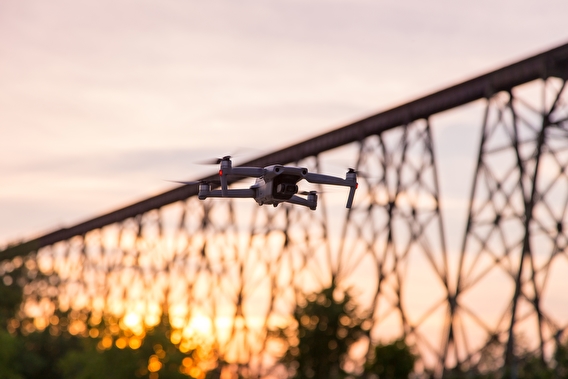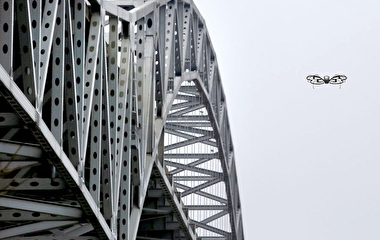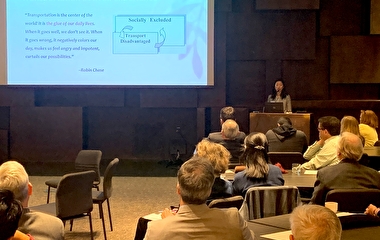
As bridge infrastructure in Minnesota and across the country ages, maintaining and preserving the existing bridge network becomes increasingly important—and increasingly challenging. In Minnesota alone, 25 percent of bridge-deck area is more than 50 years old, and the number of bridges rated in “fair” condition has recently overtaken the number rated in “good” condition.
Addressing this challenge will require innovative solutions—including the use of technologies such as sensors and drones, according to experts from the University of Minnesota and the Minnesota Department of Transportation (MnDOT) who participated in a CTS Future of Mobility series webinar.
“To maintain an aging bridge infrastructure with limited funding levels, we will need to prioritize the maintenance schedule by identifying and performing early preservation activities that improve the service life of our structures,” said Lauren Linderman, an associate professor in the Department of Civil, Environmental and Geo- Engineering. The webinar presentation builds on Linderman’s article “Sensing the Future of Infrastructure.”
A key tool for this type of bridge asset management is data. Linderman explained how installing sensors on bridges—such as the 500 sensors that have been collecting data on the I-35W bridge in Minneapolis since 2008—is supporting bridge preservation efforts. “The instrumented I-35W bridge has allowed us to investigate the bridge’s long-term behavior, gain insights on our design assumptions, and evaluate the sensor system for monitoring other bridges in the future,” she said.
One example of knowledge gained from the sensors is a clearer understanding of how Minnesota’s extreme thermal gradients affect the bridge. “Because we often have sun on top of the bridge deck and cooler air below, we found that the daily and seasonal environmental variations have a greater impact on the bridge’s behavior than fully loaded trucks,” Linderman said. “This allowed us to identify a thermal gradient model that matches our Minnesota curve better, which can inform the design standards and needs for new projects.”
In the future, Linderman believes lower-cost embedded sensing in bridges will be combined with advances in machine learning and pattern recognition to help reduce maintenance costs by augmenting visual inspections and prioritizing earlier preservation interventions.

Using drones for bridge inspection is another technology taking off in Minnesota, explained MnDOT State Bridge Inspection Engineer Jennifer Wells. “Unmanned aircraft systems have come a long way since we first started using them for bridge inspection in 2015,” Wells said. “Today’s drones can collect vast amounts of data faster than humans [can] and fly with only direction input from pilots. They can also collect asset data autonomously.”
Wells pointed out that the drones don’t replace human inspectors or traditional access tools, but simply allow MnDOT to collect more data in a safer, more cost-effective way. “Drones don’t just help us access areas that were previously very difficult to reach and limit the number of lane closures we need to do,” Wells explained. “They also provide extremely detailed documentation of a bridge and generate a ‘digital twin’ version of the bridge, which we can use to improve our collaboration and communication with partners such as designers and contractors.”
—Megan Tsai, contributing writer


